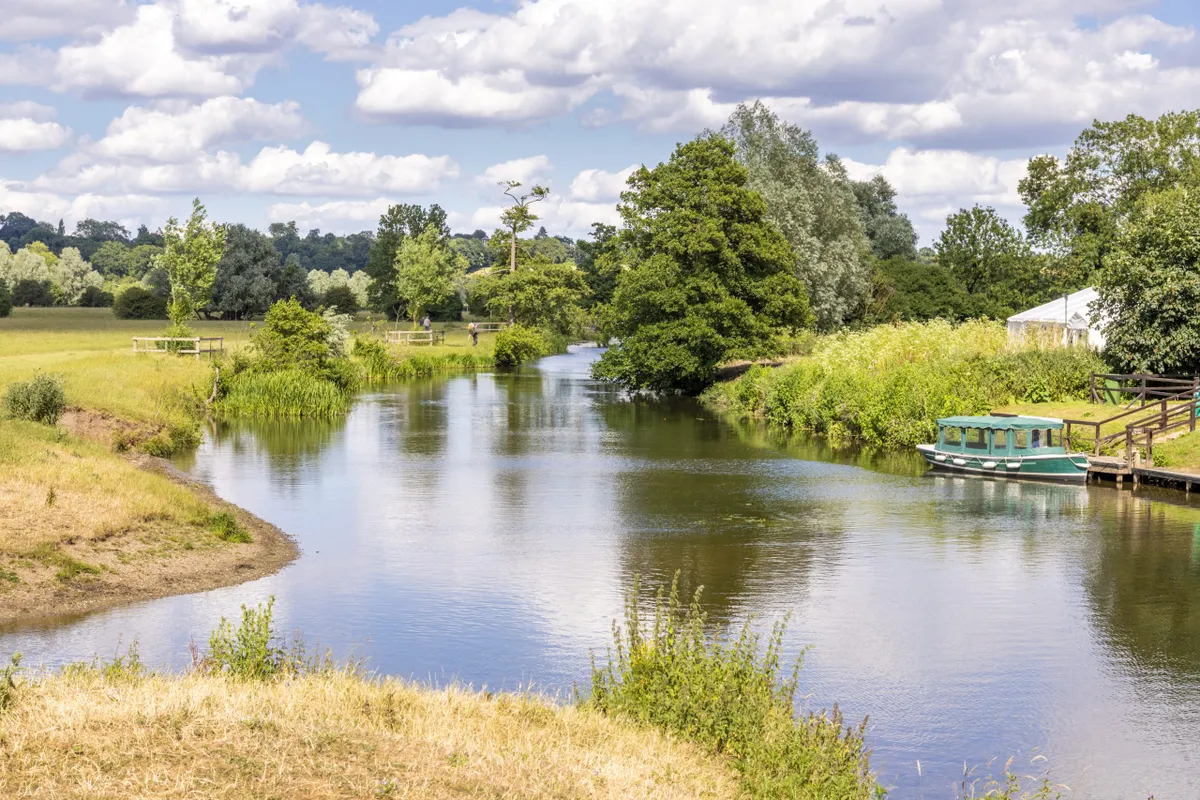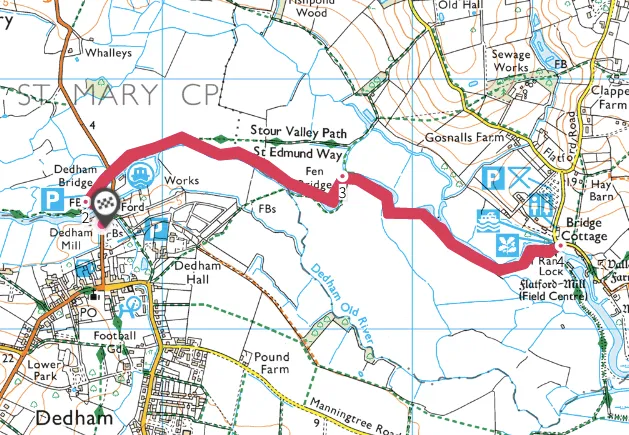The River Stour – which forms most of the county boundary between Suffolk and Essex – could be the most celebrated river in the country after the Thames. Why? Because it features in one of Britain’s favourite artworks, The Hay Wain, painted by John Constable in 1821.
Remarkably, the same scene can be viewed today. Preserved (but not fossilised) by the National Trust, this is the apex of a much-loved river walk.

Stour Valley and John Constable
Dedham Vale’s stout oaks, weeping willows, wildflower meadows and meandering rivers are well known to many who have never been there, thanks to landscapes painted by 18th-century artist, John Constable. Many of his most famous works, such as The Hay Wain, The Cornfield and The Leaping Horse, depict the characteristic lowland countryside and charming villages of the Stour Valley, and you stroll through many of the paintings’ settings on this walk.
Constable studied nature rather than artistic principles, often painting outside rather than working from sketches. Instead of enhancing and stylising his works in the manner of most contemporary artists, he sought to capture the exact colours of the countryside and fleeting effects of light and shade (which he used the Italian word chiaroscuro to describe).
Dedham Vale is as beautiful as it looks on canvas. Some of the finest lowland landscapes in the country – splendidly English without looking like they belong on a chocolate box – are now preserved within the Dedham Vale Area of Outstanding Natural Beauty.
River stour walk
3 miles/4.8km | 1.5 hours | easy
1. Dedham Start
Pull into Dedham, and look at the handsome church of St Mary the Virgin. Note the church’s famous bell cage. These old clangers are so loud there’s a five-minute restriction on their ringing.
2. Cloud and Meadow
Through a kissing gate, head across the meadows alongside the River Stour and Flatford Mill. As you tread the turf, gaze up at Constable’s muse: the clouds. Constable once described the sky as “the chief organ of sentiment” and along with the willow trees, triangular-eaved houses and the flat, fertile pastures, it’s a vital part of his vision.
Alongside the marsh runs the gentle Stour. Pollarded willows line the slow stream. This landscape once provided a living for Constable’s barge-owning father, who took crops to London and returned with sewage for the fields.
3. Time to think
On his way to school in Dedham, Constable would often stop at Fen Bridge for a moment’s contemplation. Stay quiet and you might see owls, woodpeckers, kingfishers and otters.
4. Constable Central
Stop at Bridge Cottage, one of several National Trust properties in the hamlet of Flatford and once home to the Constables. Tarry at the museum and riverside tearooms or continue on to the hamlet of Flatford.
The mill pond is instantly recognisable from The Hay Wain. Stand at Constable’s viewpoint and impress your friends with knowledge of his tricks: how he shortened the roofline of Willy Lott’s Cottage and added extra foliage for picturesque effect. The nearby RSPB Flatford Wildlife Garden makes another worthy stop.
There’s a choice now – to continue on the Stour Valley Path to Brantham, returning on the opposite bank, or to loop back to Dedham.
If you fancy a bite to eat, call in at The Boathouse in Dedham, a contemporary restaurant with boat hire, a wonderful way to end the day.
Map
Dedham Valley walking route and map

